Quantitative Identification of Cracks in Jointed Layered Rock Specimens under Uniaxial Compression
Abstract
:1. Introduction
2. Materials and Methods
3. Uniaxial Compression Test Based on DIC
3.1. Experimental Equipment
3.2. Principle of DIC Technology
4. Study on Crack Propagation and Mechanical Properties of Three Kinds of Rock Specimens
4.1. Identification of Crack Types
4.2. Quantitative Characterization of Crack Propagation
4.3. Study on Mechanical Properties
5. Study on Acoustic Emission Characteristics
6. Conclusions
- (1)
- A new approach to evaluating crack characteristics is described as follows: the crack is tensile (type I) when the symmetric points have one positive and one negative u′; when the difference between the symmetric points v′ is greater than 0.15, the crack is a shear crack (type II); and when the u′ of the two symmetric points is one positive and one negative and the difference in v′ is greater than 0.15, the crack is a composite tension–shear crack (type I–II). Tensile and shear cracks, a hybrid failure of tensile and shear, are visible in the failure of layered rock specimens.
- (2)
- The covariance parameter V, which is based on the covariance matrix, was used to define the dispersion of the strain field. Under uniaxial compression, specimens with different joint inclination angles obey the same change law: when the crack is not cracked, V remains constant and is almost 0; V rises gradually during the early stages of fracture initiation; when the crack spreads quickly, V rises steeply.
- (3)
- By analyzing the covariance parameter V, a new method for the quantitative identification of different types of cracks was found. Crack types can be identified quantitatively according to the growth rate of V: type I tensile cracks (0.12 × 10−4~0.49 × 10−4); type II shear cracks (1.17 × 10−4~4.5 × 10−4); and type I–II composite tension–shear crack (0.72 × 10−4~0.99 × 10−4).
Author Contributions
Funding
Institutional Review Board Statement
Informed Consent Statement
Data Availability Statement
Conflicts of Interest
References
- Liu, Y.; Li, H.; Xiao, K.; Li, J.; Xia, X.; Liu, B. Seismic stability analysis of a layered rock slope. Comput. Geotech. 2014, 55, 474–481. [Google Scholar] [CrossRef]
- Man, J.; Huang, H.; Ai, Z.; Chen, J. Analytical model for tunnel face stability in longitudinally inclined layered rock masses with weak interlayer. Comput. Geotech. 2022, 143, 104608. [Google Scholar] [CrossRef]
- Tien, Y.M.; Kuo, M.C.; Juang, C.H. An experimental investigation of the failure mechanism of simulated transversely isotropic rocks. Int. J. Rock Mech. Min. Sci. 2006, 43, 1163–1181. [Google Scholar] [CrossRef]
- Wang, Q.; Wang, J.; Ye, Y.; Jiang, W.; Yao, N. Failure characteristics and strength model of composite rock samples in contact zone under compression. Arch. Min. Sci. 2020, 65, 347–361. [Google Scholar] [CrossRef]
- Cho, J.; Kim, H.; Jeon, S.; Min, K. Deformation and strength anisotropy of Asan gneiss, Boryeong shale, and Yeoncheon schist. Int. J. Rock Mech. Min. Sci. 2012, 50, 158–169. [Google Scholar] [CrossRef]
- Aliabadian, Z.; Gaofeng, Z.; Russell, A.R. Failure, crack initiation and the tensile strength of transversely isotropic rock using the Brazilian test. Int. J. Rock Mech. Min. Sci. 2019, 122, 1365–1609. [Google Scholar] [CrossRef]
- He, W.; Hayatdavoudi, A. A comprehensive analysis of fracture initiation and propagation in sandstones based on micro-level observation and digital imaging correlation. J. Pet. Sci. Eng. 2018, 164, 75–86. [Google Scholar] [CrossRef]
- Nguyen, T.L.; Hall, S.A.; Vacher, P.; Viggiani, G. Fracture mechanisms in soft rock: Identification and quantification of evolving displacement discontinuities by extended digital image correlation. Tectonophysics 2011, 503, 117–128. [Google Scholar] [CrossRef]
- Zhang, H.; Huang, G.; Song, H.; Kang, Y. Experimental investigation of deformation and failure mechanisms in rock under indentation by digital image correlation. Eng. Fract. Mech. 2012, 96, 667–675. [Google Scholar] [CrossRef]
- Wasantha, P.L.P.; Ranjith, P.G.; Shao, S.S. Energy monitoring and analysis during deformation of bedded-sandstone: Use of acoustic emission. Ultrasonics 2014, 54, 217–226. [Google Scholar] [CrossRef] [PubMed]
- Krasnovskii, A.A.; Mirenkov, V.E. Determination of boundary conditions in rocks under comperssion. J. Min. Sci. 2009, 45, 315–323. [Google Scholar] [CrossRef]
- Bai, T.; Pollard, D.D.; Gao, H. Explanation for fracture spacing in layered materials. Nature 2000, 403, 753–756. [Google Scholar] [CrossRef] [PubMed]
- Ma, J.; Chen, J.; Chen, W.; Huang, L. A coupled thermal-elastic-plastic-damage model for concrete subjected to dynamic loading. Int. J. Plast. 2022, 153, 103279. [Google Scholar] [CrossRef]
- Huang, L.; Liang, J.; Ma, J.; Yang, H.; Gui, Y. Spherical cavity expansion in porous rock considering plasticity and damage. Int. J. Numer. Anal. Methods Geomech. 2021, 45, 2235–2259. [Google Scholar]
- Ma, J.; Chen, J.; Guan, J.; Lin, Y.; Chen, W.; Huang, L. Implementation of Johnson-Holmquist-Beissel model in four-dimensional lattice spring model and its application in projectile penetration. Int. J. Impact Eng. 2022, 170, 104340. [Google Scholar] [CrossRef]
- Stirling, R.A.; Simpson, D.J.; Davie, C.T. The application of digital image correlation to Brazilian testing of sandstone. Int. J. Rock Mech. Min. Sci. 2012, 60, 1–11. [Google Scholar] [CrossRef]
- Gao, K.; Harrison, J.P. Scalar-valued measures of stress dispersion. Int. J. Rock Mech. Min. Sci. 2018, 106, 234–242. [Google Scholar] [CrossRef]


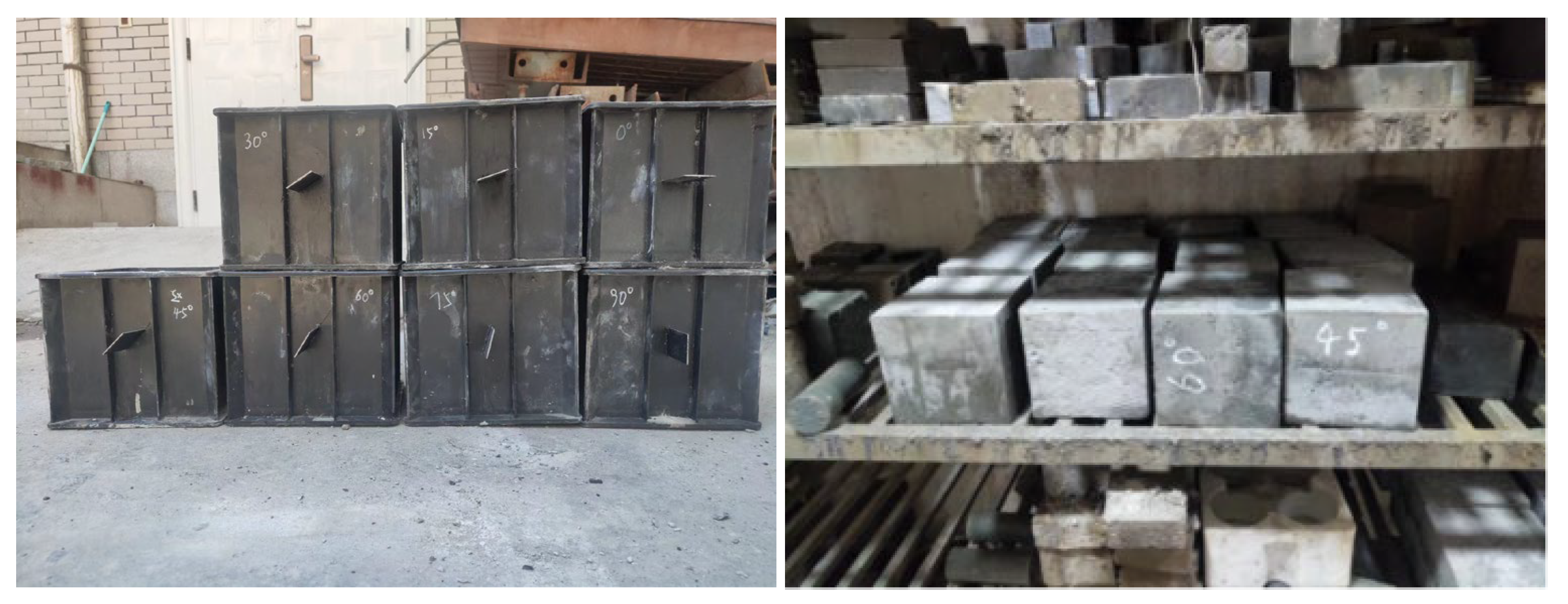

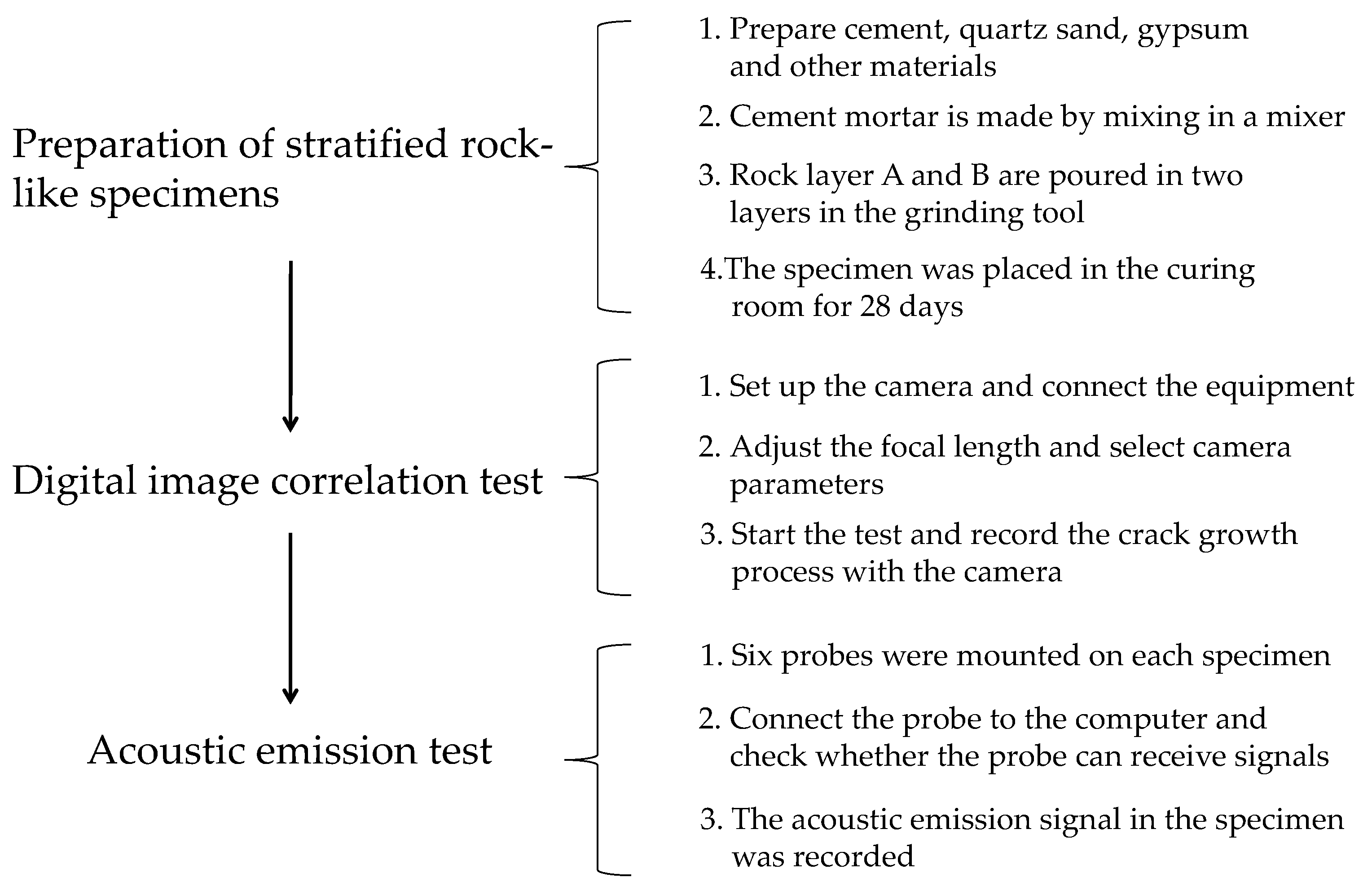
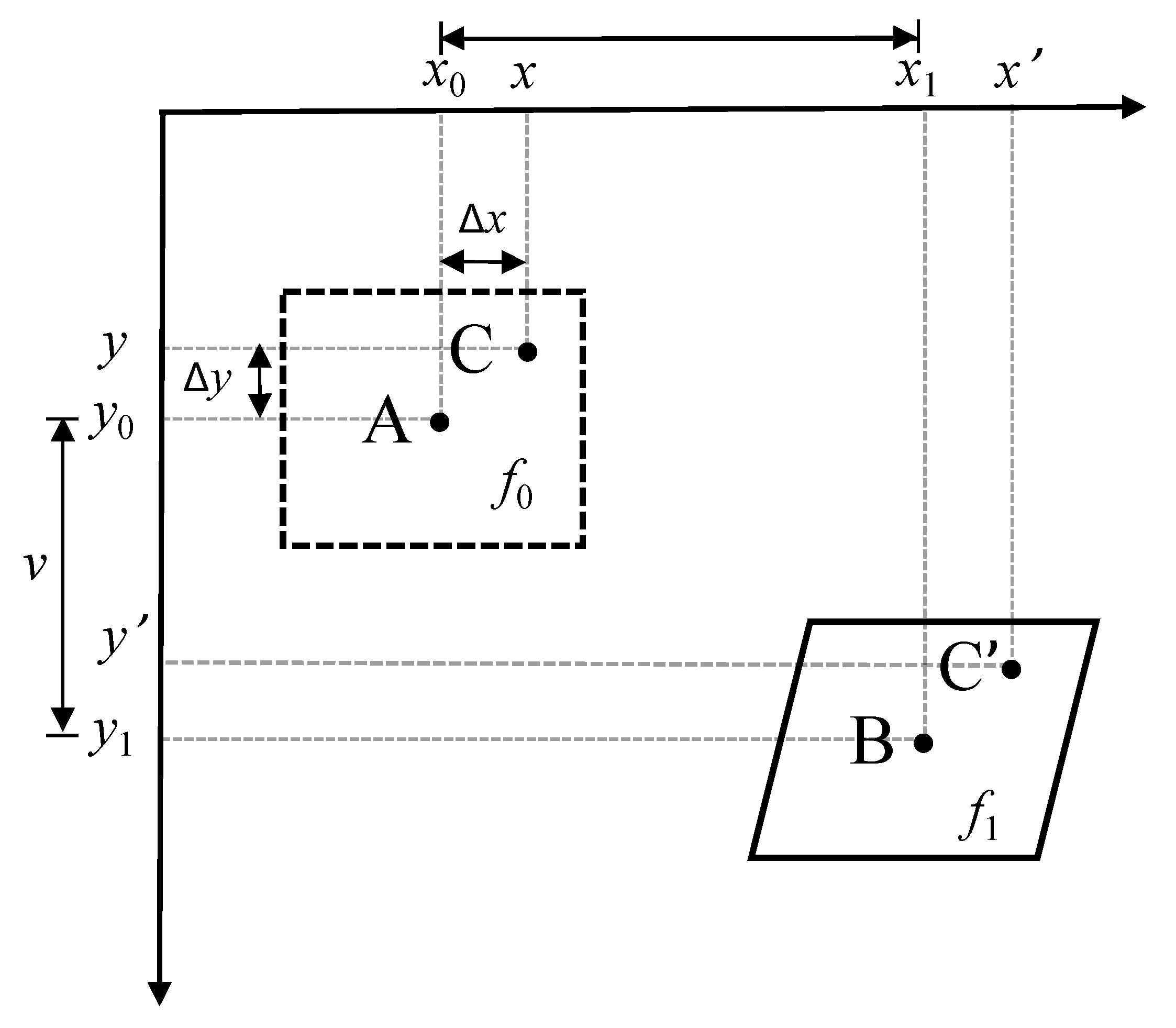


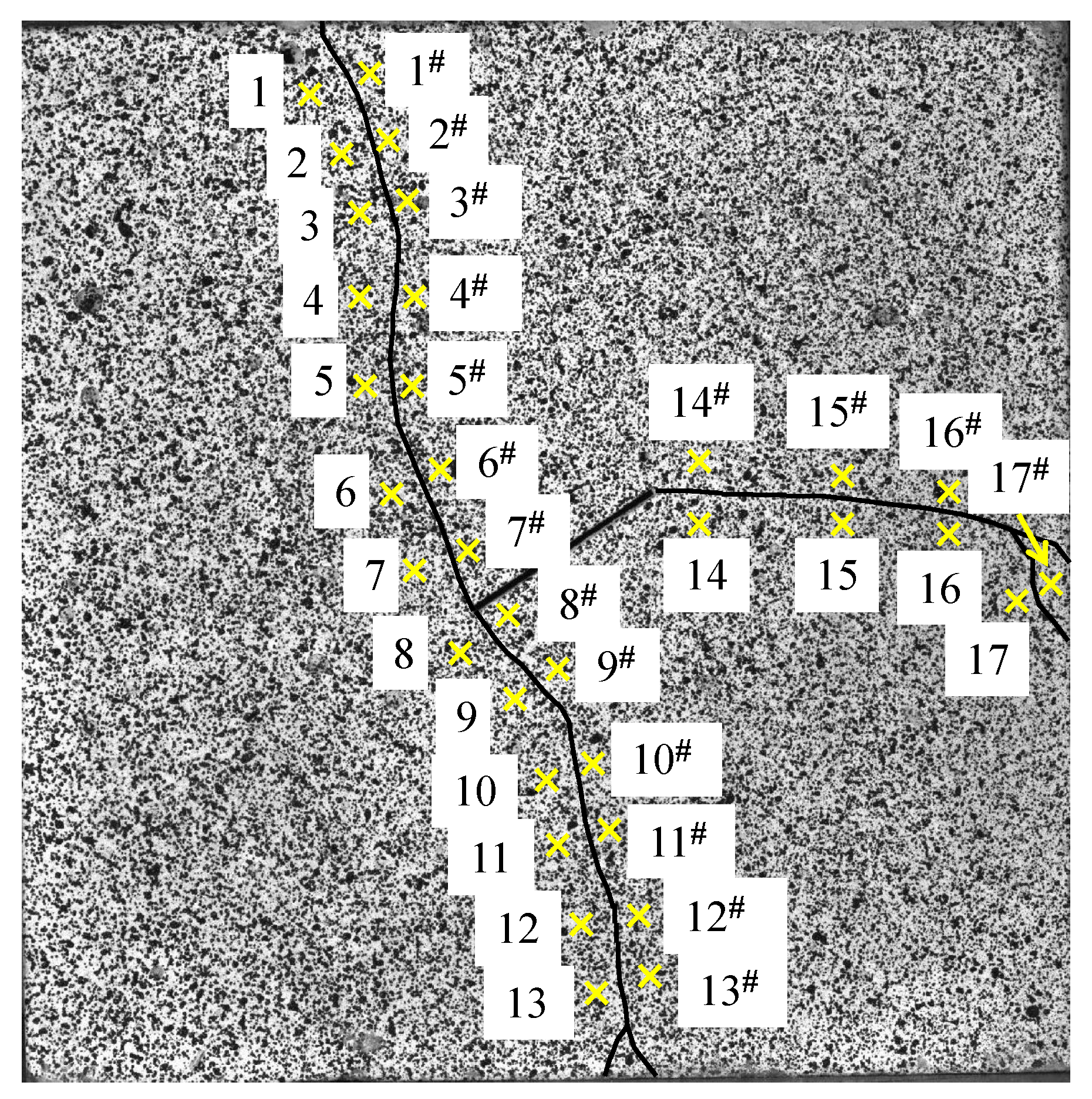
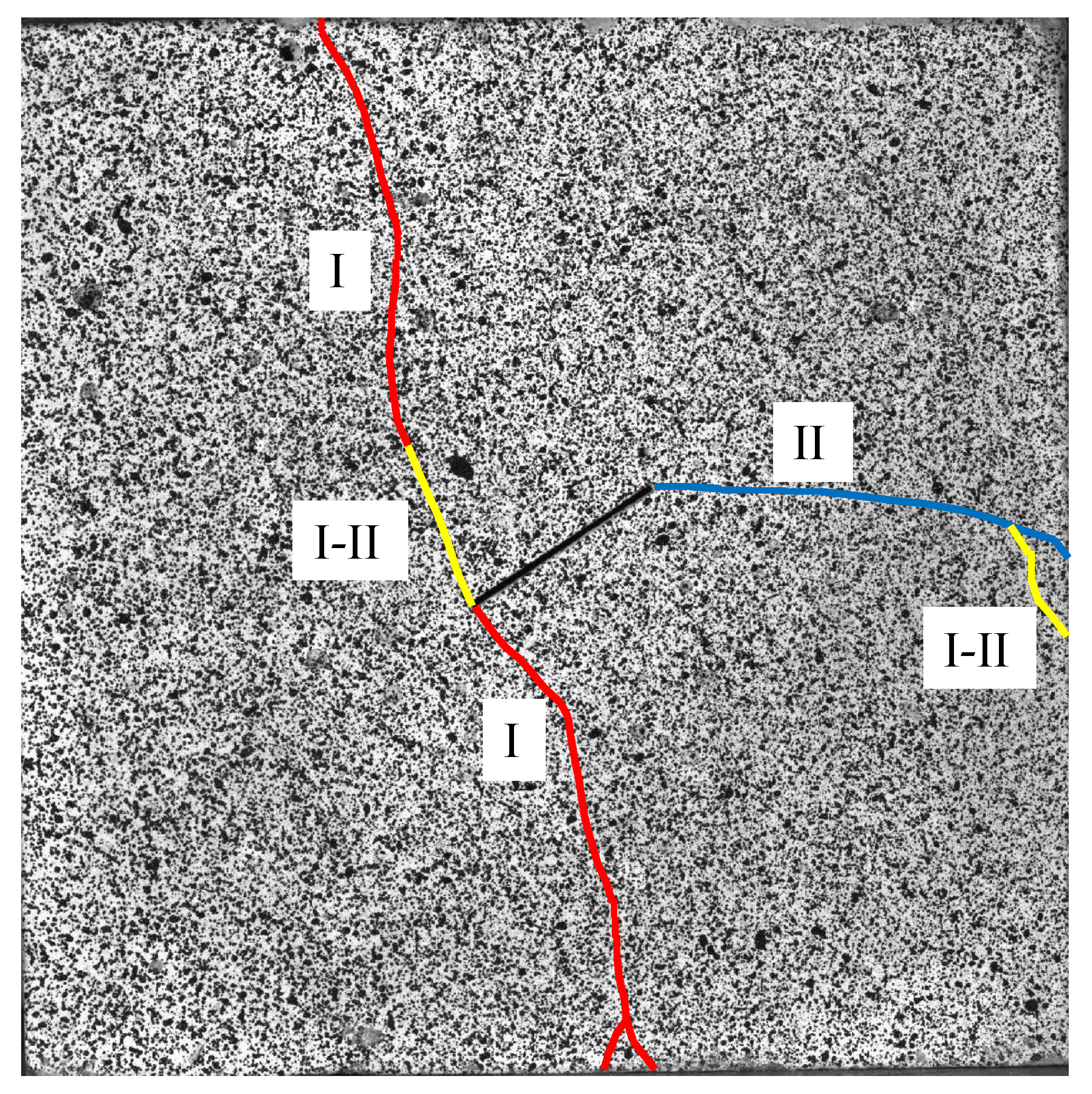

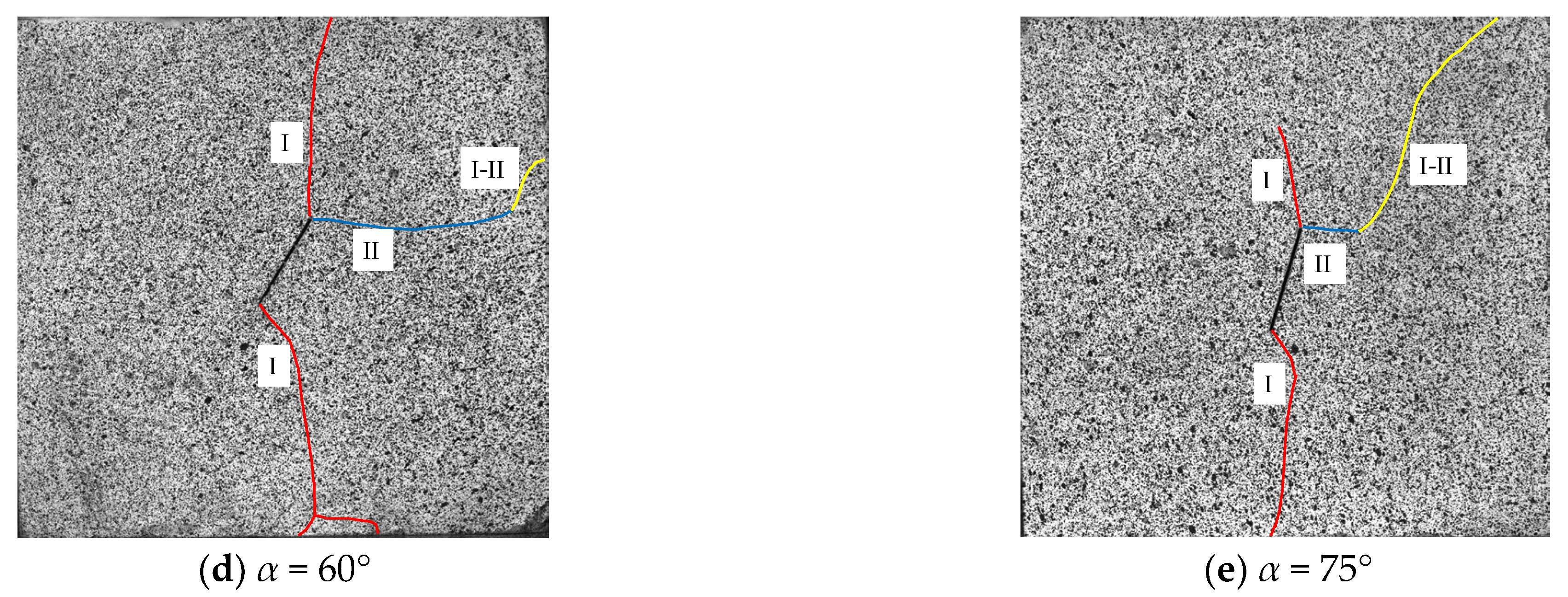







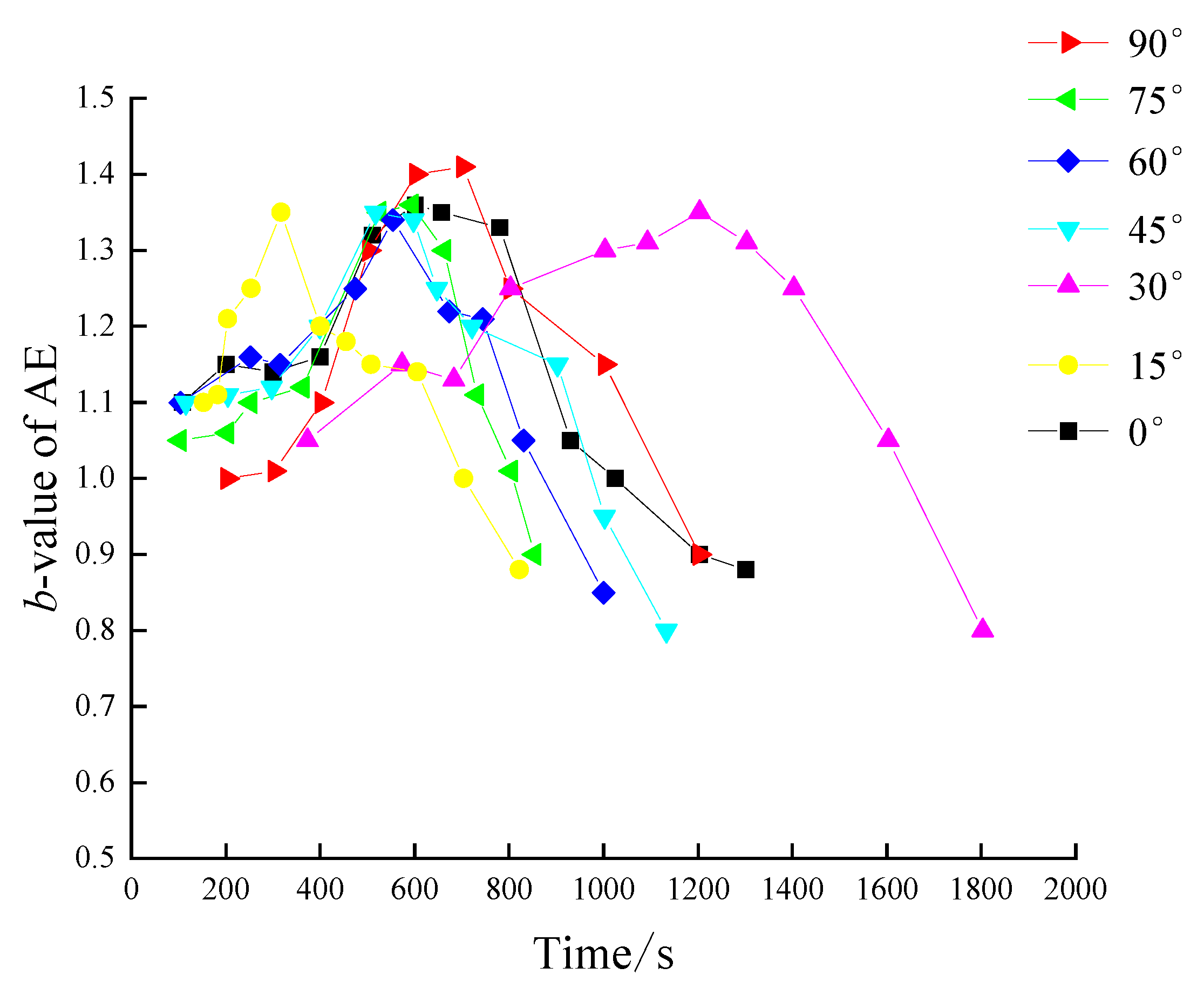
| Compressive Strength/MPa | Elasticity Modulus/GPa | Poisson Ratio | Density g/cm3 | |
|---|---|---|---|---|
| Material A | 44.21 | 3.14 | 0.21 | 2.01 |
| Material B | 17.30 | 1.58 | 0.23 | 1.52 |
| Displacement | u/mm | v/mm | u′/mm | v′/mm | |
|---|---|---|---|---|---|
| The Number of Points | |||||
| 1 | 0.314 | 3.515 | −0.973 | 4.012 | |
| 1# | 1.973 | 4.053 | 0.771 | 4.011 | |
| 2 | 0.361 | 3.501 | −0.912 | 3.977 | |
| 2# | 2.005 | 3.976 | 0.838 | 3.908 | |
| 3 | 0.430 | 3.316 | −0.761 | 3.734 | |
| 3# | 1.793 | 3.742 | 0.679 | 3.714 | |
| 4 | −0.506 | 3.707 | −0.771 | 3.770 | |
| 4# | 0.773 | 3.671 | 0.520 | 3.643 | |
| 5 | −0.395 | 3.756 | −0.663 | 3.811 | |
| 5# | 0.934 | 3.832 | 0.671 | 3.794 | |
| 6 | 0.736 | 3.230 | −0.539 | 3.633 | |
| 6# | 1.592 | 3.390 | 0.440 | 3.447 | |
| 7 | 0.485 | 2.768 | −0.641 | 3.179 | |
| 7# | 1.660 | 3.067 | 0.667 | 3.021 | |
| 8 | 1.711 | 2.015 | −0.733 | 3.371 | |
| 8# | 2.754 | 2.957 | 0.652 | 3.392 | |
| 9 | 1.874 | 2.180 | −0.631 | 3.502 | |
| 9# | 3.004 | 3.214 | 0.784 | 3.619 | |
| 10 | 0.124 | 3.498 | −0.663 | 3.717 | |
| 10# | 1.508 | 3.693 | 0.774 | 3.611 | |
| 11 | 0.081 | 3.494 | −0.709 | 3.723 | |
| 11# | 1.422 | 3.699 | 0.681 | 3.637 | |
| 12 | −0.477 | 3.707 | −0.811 | 3.792 | |
| 12# | 1.067 | 3.861 | 0.738 | 3.811 | |
| 13 | −0.545 | 3.751 | −0.883 | 3.843 | |
| 13# | 1.155 | 3.971 | 0.817 | 3.915 | |
| 14 | 0.943 | 3.675 | 3.635 | 0.691 | |
| 14# | −0.282 | 3.533 | 3.579 | −0.533 | |
| 15 | 0.850 | 3.505 | 3.471 | 0.609 | |
| 15# | −0.374 | 3.355 | 3.406 | −0.613 | |
| 16 | 0.911 | 3.703 | 3.666 | 0.657 | |
| 16# | −0.429 | 3.487 | 3.543 | −0.678 | |
| 17 | 0.270 | 3.087 | −0.697 | 3.411 | |
| 17# | 1.457 | 3.552 | 0.497 | 3.552 | |
| α Mechanical Parameter | Complete Specimen | 0° | 15° | 30° | 45° | 60° | 75° |
|---|---|---|---|---|---|---|---|
| Compressive strength/MPa | 23.13 | 13.11 | 15.57 | 18.62 | 19.60 | 17.22 | 19.50 |
| Elasticity modulus/GPa | 2.17 | 0.82 | 1.13 | 1.35 | 1.56 | 1.28 | 1.31 |
Disclaimer/Publisher’s Note: The statements, opinions and data contained in all publications are solely those of the individual author(s) and contributor(s) and not of MDPI and/or the editor(s). MDPI and/or the editor(s) disclaim responsibility for any injury to people or property resulting from any ideas, methods, instructions or products referred to in the content. |
© 2023 by the authors. Licensee MDPI, Basel, Switzerland. This article is an open access article distributed under the terms and conditions of the Creative Commons Attribution (CC BY) license (https://creativecommons.org/licenses/by/4.0/).
Share and Cite
Xiong, B.; Sun, J.; Zhao, Y.; Wang, Z.; Wang, Z.; Chen, B. Quantitative Identification of Cracks in Jointed Layered Rock Specimens under Uniaxial Compression. Sustainability 2023, 15, 7073. https://doi.org/10.3390/su15097073
Xiong B, Sun J, Zhao Y, Wang Z, Wang Z, Chen B. Quantitative Identification of Cracks in Jointed Layered Rock Specimens under Uniaxial Compression. Sustainability. 2023; 15(9):7073. https://doi.org/10.3390/su15097073
Chicago/Turabian StyleXiong, Baolin, Jia Sun, Yunmeng Zhao, Zhuangzhuang Wang, Zhiyuan Wang, and Bo Chen. 2023. "Quantitative Identification of Cracks in Jointed Layered Rock Specimens under Uniaxial Compression" Sustainability 15, no. 9: 7073. https://doi.org/10.3390/su15097073







